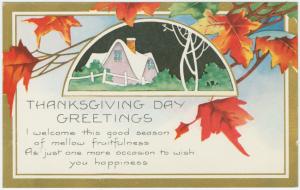 Governor Nelson A. Rockefeller and First Lady Margaretta "Happy" Rockefeller with guests on New Year's Eve, 31 December 1970. At noon on this day, Governor Rockefeller was sworn in as governor for the fourth and final time. New York (State). Governor. Public information photographs, 1910-1992. Series 13703-83, Box 3, Number 4408_23. Image courtesy of the New York State Archives.
Governor Nelson A. Rockefeller and First Lady Margaretta "Happy" Rockefeller with guests on New Year's Eve, 31 December 1970. At noon on this day, Governor Rockefeller was sworn in as governor for the fourth and final time. New York (State). Governor. Public information photographs, 1910-1992. Series 13703-83, Box 3, Number 4408_23. Image courtesy of the New York State Archives.I'm planning to devote part of the long weekend to tackling some long-neglected domestic chores, and I'm going to start by tidying up some loose ends on this blog. Owing to a combination of time pressures and a slow-to-heal (but steadily improving) injury, I let a few significant electronic records developments slide by without comments. All of them will remain relevant in 2010, so this is a good time to draw attention to them.
- In October, the Arizona Supreme Court ruled (Lake v. City of Phoenix) "that if a public entity maintains a public record in an electronic format, then the electronic version, including any embedded metadata, is subject to disclosure under [the state's] public records laws." This ruling may seem a bit obvious to any archivist or records manager, but it's actually quite significant: earlier this month, an attorney who works for New York State's Committee on Open Government noted that, until now, neither case law nor legislation has really specified whether metadata is covered by state and federal freedom of information laws. As a result, Washington State's Supreme Court, which is set to hear a similar case, and courts in other jurisdictions will likely devote a lot of attention to this ruling. If you're curious about some of the potential implications of this ruling, check out what Ars Technica and Inside Counsel have to say about it.
- Since 2003, ARMA and Cohasset Associates (and, sometimes, AIIM) have conducted annual surveys of electronic records management practices. The results of the 2009 survey were released in October, and as you might expect, the results are a mix of good and bad -- very bad -- news: organizations are starting to take action to correct their electronic records and information management problems, but most of them still have a long, long way to go before all of their problems are solved. Moreover, today's electronic records and information management shortcomings are so severe that they may well "jeopardize the future reliability, availability, and trustworthiness of many records. " If you want to figure out how your organization's policies and practices compare to those of others or have any sort of interest in electronic records management, the report (executive summary here, full text here) is an interesting, sobering read.
- AIIM regularly offers free Webinars focusing on records, content, and business process management, and archived Webinars are available via its Web site; registration is required. Recently archived Webinars focus on the current state of electronic records management, determining responsibility for records/content management, managing government content in the cloud, and other topics relating to electronic records management. If you're finding it harder and harder to get permission to travel to conferences or training sessions or simply want to keep pace with new developments, you might want to check out these Webinars.
- The New York State Historical Records Advisory Board recently launched a new Web resource, 9/11 Memory and History, that is designed to help survivors and people who lost friends or family on 11 September 2001 preserve photos or letters, drawings or paintings, scrapbooks, sound or video recordings, computer files or digital images, articles of clothing, or other objects. In addition to text-based instructions, the site also includes a number of short videos. Hofstra University archivist Geri Solomon and family member Margie Miller's discussion of what to save and how to save, and staff from the New York State Archives discuss other preservation-related concerns: Director of Operations Kathleen Roe talks about donating materials to a repository, Paper Conservator Sue Bove details how to care for photographs, drawings, and newspapers, and Electronic Records Archivist Bonita Weddle (i.e., Yours Truly) discusses preservation of digital files. Although this site is really targeted to the 9/11 community, other people interested in preserving family history materials and other personal materials should also find it useful.
- Andrew Sniderman has written a reflective, thought-provoking piece about the psychic cost of GMail and other services that unwittingly lead users to document their lives more fully than ever before: digital archives of e-mails, texts, etc., may make it harder for users to deceive themselves about their motives and actions, but they also make it easier for them to fixate on old wounds and regrets. An ever-growing number of people will no doubt agree with Sniderman's assertion that "preservation gives the past more weight than it sometimes deserves," and many professional archivists will no doubt regard their own personal digital archives with at least some ambivalence. However, as Cal Lee pointed out at SAA earlier this year, archivists are ethically obligated to furnish guidance to people who are struggling to care for their personal digital records, so we really should start thinking about what we'll say to friends, relatives, prospective donors, and others who come to us for help.
- Finally, some fun stuff. Building upon the success of its first animated short, Digital Preservation and Nuclear Disaster: An Animation, the good people at Digital Preservation Europe have produced two additional videos. Enjoy, and have a Happy New Year!




















